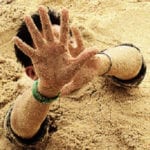 Music
Music  Music
Music  History
History 10 Less Than Jolly Events That Occurred on December 25
 Weird Stuff
Weird Stuff 10 Funny Ways That Researchers Overthink Christmas
 Politics
Politics 10 Political Scandals That Sent Crowds Into the Streets
 Weird Stuff
Weird Stuff Ten Bizarre Facts About The Doge Meme
 Our World
Our World 10 Ways Your Christmas Tree Is More Lit Than You Think
 Movies and TV
Movies and TV The 10 Coolest Stars to Set Sail on The Love Boat
 History
History 10 Things You Didn’t Know About the American National Anthem
 Technology
Technology Top 10 Everyday Tech Buzzwords That Hide a Darker Past
 Humans
Humans 10 Everyday Human Behaviors That Are Actually Survival Instincts
 Music
Music 10 Surprising Origin Stories of Your Favorite Holiday Songs
 History
History 10 Less Than Jolly Events That Occurred on December 25
 Weird Stuff
Weird Stuff 10 Funny Ways That Researchers Overthink Christmas
Who's Behind Listverse?

Jamie Frater
Head Editor
Jamie founded Listverse due to an insatiable desire to share fascinating, obscure, and bizarre facts. He has been a guest speaker on numerous national radio and television stations and is a five time published author.
More About Us Politics
Politics 10 Political Scandals That Sent Crowds Into the Streets
 Weird Stuff
Weird Stuff Ten Bizarre Facts About The Doge Meme
 Our World
Our World 10 Ways Your Christmas Tree Is More Lit Than You Think
 Movies and TV
Movies and TV The 10 Coolest Stars to Set Sail on The Love Boat
 History
History 10 Things You Didn’t Know About the American National Anthem
 Technology
Technology Top 10 Everyday Tech Buzzwords That Hide a Darker Past
 Humans
Humans 10 Everyday Human Behaviors That Are Actually Survival Instincts
10 Things We Only Know About Because of Whistleblowers
When whistleblowers reveal wrongdoings, they jeopardize their reputation and profession and, in extreme cases, their lives. Thanks to their sacrifice, we can learn about significant scandals—sometimes gruesome in nature. Whistleblowers may lead to justice and punishment for those who have committed wrongdoing, and they deserve praise and recognition. Here are 10 things we only know about because of whistleblowers.
Related: 10 Movies Based On True Events That Don’t Tell The Truth
10 Nazi Government’s Covert Crimes and Wrongdoings
One of the earliest discoveries of the Nazi’s covert crimes and wrongdoings came from Herbert von Bose, the chief of Adolf Hitler’s conservative Vice-Chancellor Franz von Papen’s publicity section. He used his insider status to alert the international press about the Nazi government’s hidden horrors and misdeeds.
Herbert von Bose was born on March 16, 1893, in the German-occupied Alsace-Lorraine city of Strasbourg. During World War I, he served as an intelligence officer in the Imperial German Army. During his time in the military, Herbert von Bose despised Adolf Hitler, the vulgar rabble-rouser, and his fascist Nazi Party. He leaked information to the London-based muckraking publication The Week to alert the international public of the government’s shady activities.
To silence him, the Nazi Party ordered a team of S.S. men to his office on June 30, 1934, and shot him in the head. Herbert von Bose was one of the individuals condemned to death by Hitler during the Night of the Long Knives, the Nazi Party’s political crackdown that took place from June 30 to July 2, 1934.
9 Illegal Storage of Over 100 Tons of Liquid Chlorine
James Bobreski, a process control technician at the D.C. Water and Sewer Authority’s Blue Plains Advanced Wastewater Treatment Plant, reported concerns in 1999 about defective chlorine gas detectors and the illegal storage of more than 100 tons of liquid chlorine. He was retaliated against and sacked for his whistleblowing after attempting to inform managers and asking them to make the required modifications.
Initially, the authorities said that James Bobreski was a disturber who exaggerated the dangers of disconnected safety alarms at the Blue Plains facility, which serves two million people. However, according to a Labor Department inquiry finished on March 2, Bobreski was a whistleblower who accurately warned the city about the hazards of a dangerous chlorine gas leak.
The court concluded that he was wrongfully fired after making protected disclosures to superiors and addressing his concerns publicly. Mr. Bobreski’s revelations resulted in the facility removing the liquid chlorine. Furthermore, The U.S. Department of Labor forced the D.C. Water and Sewer Authority to pay him $56,000 for damages plus legal expenses.
8 The Deportation of Jews to the Extermination Camps
Jan Karski, a Polish government-in-exile underground courier, was one of the first to provide testimony and proof to the western Allies of Nazi crimes in the Warsaw ghetto and the transportation of Jews to the camps.
Jan Karski was on his way to a bright diplomatic career when World War II broke out in September 1939. He entered the Polish army at the war’s outset before the Germans arrested him. He managed to escape and join the Polish underground resistance movement. As a messenger, Karski observed the atrocious circumstances enforced by the Germans, which resulted in the deaths of tens of thousands of Jews due to famine and sickness.
Karski then made his way through German-occupied Europe to London, where he presented a report to the Polish government in exile and top British officials. He revealed proof that Nazi Germany was slaughtering Jews across Europe. Karski even traveled to Washington, D.C., to deliver the same information to American President Franklin D. Roosevelt. He begged for particular efforts to save Jews, but Allied officials emphasized that defeating Germany militarily had to come first.
7 The National Security Agency (NSA) and Project ECHELON
Under the alias of Winslow Peck, an NSA intelligence analyst named Perry Fellwock revealed classified monitoring tactics in an interview with Ramparts magazine. He testified that NSA was using ECHELON, a top-secret program that may have been spying on you for your whole life.
Project ECHELON is allegedly the world’s first fully automated worldwide mass surveillance system. The program used huge ground-based radio antennae to capture satellite signals, including millions of people’s digital communications. It then combs through the messages for pertinent information using its content-sensitive dictionaries of phrases and keywords.
Project ECHELON has provided the UK, the U.S., Canada, Australia, and New Zealand with the ability to follow foes and allies equally within and beyond their states over the past fifty years. Curiously, NSA was a nearly unknown entity at the time and one of the most covert of the U.S. spy organizations when Fellwock revealed his findings.
Fellwock reported that the NSA had a substantially bigger budget than the CIA’s. Fellock’s disclosures of a widespread secret organization with a budget greater than the CIA were so far ahead of their time that not many people believed them for decades.
6 Abuse of Psychiatry by the Soviet Union
The Soviet Union employed psychiatry to exterminate political dissidents under the direction of general secretary Leonid Brezhnev. Vladimir Bukovsky, the whistleblower, smuggled a 150-page dossier demonstrating the political exploitation of psychiatry to the west in 1971, which he submitted to The New York Times. Photocopies of forensic reports on renowned Soviet dissidents were among the materials.
Vladimir Bukovsky, who died at 76, was a human rights activist and Soviet dissident. He was a significant figure in the Soviet dissident movement from the late 1950s through the mid-1970s, well-known both in his home country and abroad. The Soviet Union held Bukovsky in jails, labor camps, and psychiatric clinics for 12 years. His arch-enemy was the KGB.
Bukovsky remained outspoken in his criticism of the Soviet system and its successor regimes in Russia after being ejected from the Soviet Union in late 1976.
5 The Watergate Scandal and President Richard Nixon’s Role
Five burglars were apprehended after breaking into the Democratic Party’s national offices at the Watergate Hotel complex in Washington, D.C., in June 1972. The five and two others, including a former White House assistant and G. Gordon Liddy, general counsel for the Committee to Reelect the President, were charged with burglary and wiretapping just days after their arrest at Watergate.
Throughout 1972, the presidential campaign season, The Washington Post received leaks from an unknown source known only as “Deep Throat,” subsequently discovered to be FBI deputy director W. Mark Felt, Sr., barely 30 years later. Felt maintained a regular stream of scoops revealing:
- Nixon’s confidants’ direct involvement in the Watergate controversy.
- The illegally laundered campaign donations sponsored the Watergate wiretapping and break-in.
- The Watergate bugging event resulted from an operation of political surveillance and sabotage orchestrated by White House officials on behalf of President Nixon’s re-election.
Despite frequent newspaper allegations to the contrary, Nixon and his advisers stubbornly denied that anybody in the government was participating in the activities. Nixon was handily reelected in November 1972. However, the court revealed the presence of tapes of talks in the president’s office during the burglars’ trial in January 1973. The special prosecutor subpoenaed the tapes, but Nixon was adamant about keeping them.
The public pressure finally compelled Nixon to hand over the recordings, which showed Nixon’s role in the cover-up. The House of Representatives Judiciary Committee voted three articles of impeachment against Nixon in July 1974. Nixon resigned on August 8, 1974, still arguing that he had committed no crimes.
4 The CIA’s Covert Actions and Interventionist Programs in East and Southeast Asia
Ralph Walter McGehee, a former CIA case officer, shared his extremely critical views on his former agency with the public based on his experiences in East and Southeast Asia.
According to Mr. McGehee, the CIA suppressed his reports on substantial communist support in northeastern Thailand. He discovered that the Communist Party was forming “a mass-based revolutionary movement” rather than scaring the public into submission. He also began to feel that the CIA was deliberately manipulating intelligence to further the White House’s political purposes, bolstering support for the Vietnam War even as the situation deteriorated.
One of the prominent allegations by McGehee was the CIA’s role in the Indonesian mass murders of 1965–1966, which killed 500,000 to over one million people and targeted members of the Communist Party of Indonesia (PKI) and their sympathizers. However, the CIA later censored his claim.
3 A Canadian Official Visited a Strip Club while Carrying NATO Documents
Duncan Edmonds, then a Canadian civil servant, informed his senior that Minister of Defense Robert Coates had attended a West German strip club while on official business. Not only that, but he was also in possession of NATO papers, posing a security threat.
Coates resigned in early 1985 as a result of this discovery. Brian Mulroney, the Prime Minister of Canada, was enraged that Edmonds had acted as a whistleblower on Coates. He sacked Edmonds and declared him persona non grata inside the administration. This incident, which occurred so soon after the Mulroney administration took office, foretold the plethora of scandals in the coming years.
2 Nuclear Weapons Program in Israel
Mordechai Vanunu leaked information about Israel’s nuclear weapons development to the British press in 1986. Before his whistleblowing, the country purposefully kept a “nuclear ambiguity,” neither admitting nor denying that it had nuclear weapons.
Vanunu sneaked in a camera and quietly snapped 57 images while working inside the Negev Nuclear Research Center, an Israeli facility that develops and manufactures nuclear weapons. As a result of his acts, the Israeli intelligence service lured him to Italy, where they drugged and kidnapped him.
Vanunu was taken to Israel and eventually convicted in a closed-door trial. Mordechai Vanunu was imprisoned for 18 years, including more than 11 years in solitary confinement. The country also imposed sanctions on him after his release, including the prohibition of leaving Israel and speaking to foreigners.
Vanunu has been dubbed a whistleblower by the world community and a traitor by Israel. He received the Right Livelihood Award in 1987 for “his daring and self-sacrifice in exposing the scope of Israel’s nuclear weapons development.”
1 Facebook Leak Shows the Platform is Aware of its Negative Societal Effects
In 2021, Frances Haugen, then a product manager in Facebook’s civic integrity department, leaked hundreds of private papers about user research and effect, hate speech, and special policy exclusions for high-profile users, among other topics. She notified the U.S. Securities and Exchange Commission and the Wall Street Journal about the breach, which she dubbed the “Facebook Files.”
According to the reports, the firm was well aware of the detrimental impact of Instagram on adolescent users and the contribution of Facebook activity to violence in underdeveloped nations, based on internally commissioned research. The influence of the company’s platforms on propagating misleading information and boosting anger-provoking postings are among the other findings from the leak.
Furthermore, they reported that Facebook promoted hazardous information to young users using its algorithms. Posts on anorexia and photographs of self-harm were among them.








